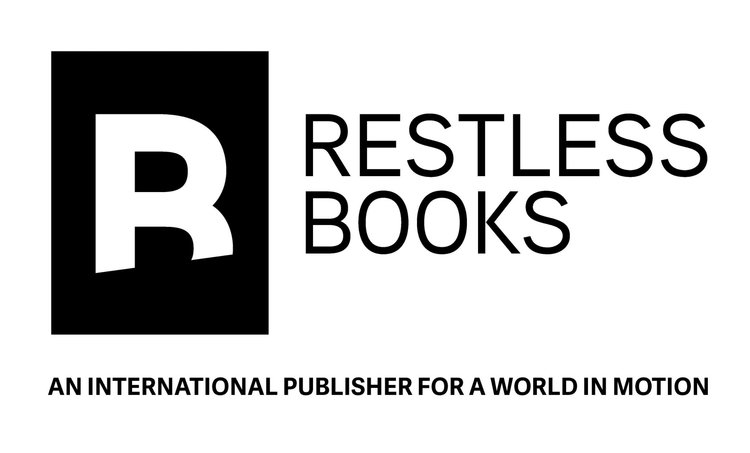By Lucia Brown
Where does a classroom skeleton go when he retires? John the Skeleton, a kind and curious protagonist, heads to southern Estonia to live in the countryside with two grandparents. Deep in the magical forests of the Võru region, John plays a part in the vivid quotidian of Grams’ and Gramps’ rural life. Through a series of gentle vignettes, he learns about ancient traditions, experiences grief and compassion, and becomes part of the family.
Southern Estonia has its own culture—and its own regional language. The Võro language has between 50,000 to 70,000 speakers and is considered endangered. According to the Võro Instituut, since all speakers are bilingual in Võro and Estonian, the number of native Võro speakers decreases ten percent with each generation as parents speak Estonian with their children.
Author Triinu Laan, who is from the Võru region, knew that the language would be critical to communicate the regional setting of the grandparents’ home. While the original book’s content is written in Estonian, the dialogue is in Võro.
“To keep the atmosphere and to show the real people that the grandma and grandpa are, I need the Võro language,” Laan said. “I know that it is risky, a bit—even in Estonia, because not all Estonians can understand and read Võro. But I hoped that through the context and story they would understand.”
Smoothly incorporated into the English by translator Adam Cullen, south Estonian culture emerges through the objects and customs with which John interacts. In one beautifully illustrated vignette, John experiences his first smoke sauna, a tradition from the region inscribed into one of UNESCO’s lists of Intangible Cultural Heritage of Humanity. As is customary, Gramps spends the whole day feeding the stove with firewood and, in the evening, the family enters the wooden structure. They strip down, throw water onto hot stones, and sweat on its wooden benches. To cool off, they run outside and make snow angels.
Laan explains that illustrator Marja-Liisa Plats, also from the Võru region, used her own grandparents as the models for the loveable Grams and Gramps. Her skillful crosshatched pencil illustrations, highlighted with flashes of bright pink, depict the mundane with playfulness.
“They have really the south Estonian touch,” Laan said. “They are like all sorts of Estonian grandmas and grandpas put together.”
Translations of John the Skeleton have also been released or are forthcoming in Croatian, Czech, Italian, Korean, Lithuanian, Latvian, and Slovenian. In each edition of the book, the tone-shift to the Võro dialogue was communicated differently; while some translators used local dialects, Cullen created a geographic parallel.
“It’s a challenge to translate something that has such a hue, it has such a rural tone,” Cullen said. “With John the Skeleton, I put more of a southern twang on it. I felt it kind of matched up in that way, funnily enough, not only because geographically, ‘rural’ is in southern Estonia, but there’s that slower pace [of life].”
Grams and Gramps care for John and introduce him to the texture of their lives: their grandchildren, the frozen lake, the farm animals, the apple trees. The story also masterfully folds in conversations about death, heartache, and care. In the Võro region, people are buried with something that was significant to them in life; can Gramps be buried with John?
“I hope that children better understand that a happy and a little bit of a wild life is for everyone, in every area, for people at every age,” Laan said. “You can enjoy life and you can have contact with wild nature and with the people who are gone.”
As the book ends, John helps comfort Gramps after Grams passes away. Together, they repeat the Võro word for linden blossoms: pähnähäimetsäi (pah-nah-heights-met-sigh-y). This word will keep them close to Grams, even though she’s no longer with them.
“Something I hope that is taken out of reading it is a theme of continuation,” Cullen said. “Things continue, be it after school or after work, retirement or after life—after your natural contribution to the world has come to its conclusion. But there’s still more. There are the grandchildren, the flowers still blossom, the trees still grow. And practices that are ancient, like the tea and putting things in the coffin, can continue on and will still keep going. It’s a very hopeful and hope-filled view and outlook on life.”
John the Skeleton was published by Restless Books on October 1, 2024. Order from Restless here.
By Triinu Laan
Illustrated by Marja-Liisa Plats
Translated from the Estonian by Adam Cullen
Yonder: Restless Books for Young Readers | Ages 6–12
2025 Mildred L. Batchelder Award Winner
2025 USBBY Outstanding International Book
2022 Bologna Children’s Book Fair Illustrators Exhibition winner
2021 The White Ravens catalog
2021 Tartu Prize for Children’s Literature
Hardcover • ISBN: 9781632063700
Publication date: Oct 1, 2024




By Marcus Malte
Translated from the French by Emma Ramadan and Tom Roberge
With a Preface by Julie Orringer
Winner of the prestigious Prix Femina, The Boy is an expansive and entrancing historical novel that follows a nearly feral child from the French countryside as he joins society and plunges into the torrid events of the first half of the 20th century.
Paperback • ISBN: 9781632061713
Publication date: Mar 26, 2019